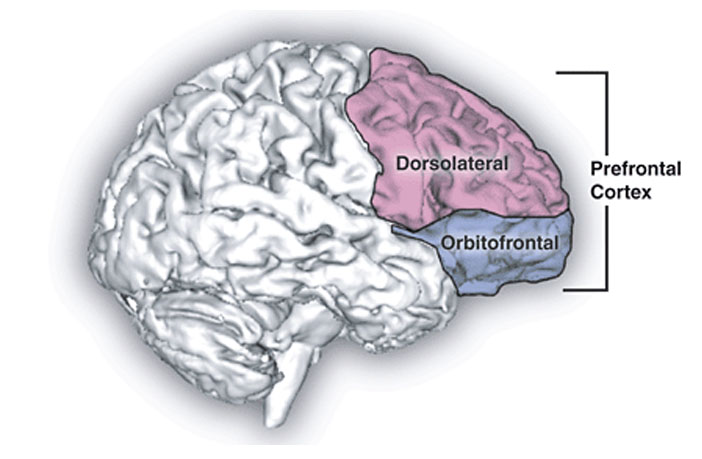Psychopathic traits may have distinct neurobiological correlates in youth
By Eric W. Dolan December 13, 2020

[url=https://twitter.com/intent/tweet?url=https%3A%2F%2Fwww.psypost.org%2F2020%2F12%2Fpsychopathic-traits-may-have-distinct-neurobiological-correlates-in-youth-58790&text=Psychopathic traits may have distinct neurobiological correlates in youth] [/url] [url=https://pinterest.com/pin/create/button/?url=https%3A%2F%2Fwww.psypost.org%2F2020%2F12%2Fpsychopathic-traits-may-have-distinct-neurobiological-correlates-in-youth-58790&media=https%3A%2F%2Fwww.psypost.org%2Fwp-content%2Fuploads%2F2017%2F08%2FDorsolateral-orbitofrontal-prefrontal-cortex.jpg&description=Psychopathic traits may have distinct neurobiological correlates in youth] [/url] [email=?subject=Psychopathic%20traits%20may%20have%20distinct%20neurobiological%20correlates%20in%20youth&body=https%3A%2F%2Fwww.psypost.org%2F2020%2F12%2Fpsychopathic-traits-may-have-distinct-neurobiological-correlates-in-youth-58790] [/email]
Different dimensions of psychopathic traits are associated with different brain abnormalities in youth, according to new research published in the Journal of Psychiatric Research.
“As a neuropsychologist, the neuropsychology of psychopathy has been one of my research interests. More importantly, prior studies have largely focused on adult psychopathy and whether the same brain correlates apply to adolescents whose neuropsychological functioning is drastically changing over time warrants investigation,” said study author Bess Yin-Hung Lam, a research assistant professor at The University of Hong Kong.
In the study, the psychopathic traits of 29 children living in Brooklyn, New York, were assessed when they were 7 to 10 years old. Four years later, the participants underwent magnetic resonance imaging (MRI) of the brain to assess gray matter volumes.
The researchers found that psychopathic traits were associated with asymmetries in the medial orbitofrontal cortex (mOFC), a brain region implicated in behavioral regulation and moral reasoning. Participants with greater callous-unemotional traits tended to have a smaller right mOFC as compared to the left mOFC. Those with higher levels of impulsivity, on the other hand, tended to have a smaller left mOFC when compared to the right.
The findings indicate that “dimensions of psychopathic traits (callous-unemotional traits, narcissism, and impulsivity) may have distinct neurobiological correlates,” Lam told PsyPost. “Ultimately, the current research study furthers our understanding of the early neural correlates of psychopathic traits and may potentially aid in the prevention of crime (e.g., non-invasive brain stimulation intervention) in adulthood.”
The researchers controlled for age, sex, intelligence, pubertal stage, and whole-brain volumes. But as with any study, the research includes some limitations.
“The present study did not confirm the causal relationship between psychopathic traits and the specific brain region of interest but the present findings can set up the foundation to test the relationship between the two in future studies. Future studies should also investigate an adolescent group with conduct disorder and compare them to a neurotypical sample for a better understanding of distinct neurobiological correlates associated with different psychopathic traits,” Lam explained.
“Prior literature has shown that psychopathic traits are among the most significant risk factors for antisocial behaviors. Specifically, half of the crimes in the U.S. were committed by adults who had shown psychopathic traits during adolescence. These criminal behaviors incur enormous psychological and financial burden for individuals’ families and society. Hence, it is essential to understand the etiology of these problematic traits and behaviors at early ages,” she added.
The study, “Gray matter asymmetry in the orbitofrontal cortex in relation to psychopathic traits in adolescents“, was authored by Bess Yin-Hung Lam, Yonglin Huang and Yu Gao.
https://www.psypost.org/2020/12/psychopathic-traits-may-have-distinct-neurobiological-correlates-in-youth-58790
Thanks to: https://www.psypost.org
By Eric W. Dolan December 13, 2020

[url=https://twitter.com/intent/tweet?url=https%3A%2F%2Fwww.psypost.org%2F2020%2F12%2Fpsychopathic-traits-may-have-distinct-neurobiological-correlates-in-youth-58790&text=Psychopathic traits may have distinct neurobiological correlates in youth] [/url] [url=https://pinterest.com/pin/create/button/?url=https%3A%2F%2Fwww.psypost.org%2F2020%2F12%2Fpsychopathic-traits-may-have-distinct-neurobiological-correlates-in-youth-58790&media=https%3A%2F%2Fwww.psypost.org%2Fwp-content%2Fuploads%2F2017%2F08%2FDorsolateral-orbitofrontal-prefrontal-cortex.jpg&description=Psychopathic traits may have distinct neurobiological correlates in youth] [/url] [email=?subject=Psychopathic%20traits%20may%20have%20distinct%20neurobiological%20correlates%20in%20youth&body=https%3A%2F%2Fwww.psypost.org%2F2020%2F12%2Fpsychopathic-traits-may-have-distinct-neurobiological-correlates-in-youth-58790] [/email]
Different dimensions of psychopathic traits are associated with different brain abnormalities in youth, according to new research published in the Journal of Psychiatric Research.
“As a neuropsychologist, the neuropsychology of psychopathy has been one of my research interests. More importantly, prior studies have largely focused on adult psychopathy and whether the same brain correlates apply to adolescents whose neuropsychological functioning is drastically changing over time warrants investigation,” said study author Bess Yin-Hung Lam, a research assistant professor at The University of Hong Kong.
In the study, the psychopathic traits of 29 children living in Brooklyn, New York, were assessed when they were 7 to 10 years old. Four years later, the participants underwent magnetic resonance imaging (MRI) of the brain to assess gray matter volumes.
The researchers found that psychopathic traits were associated with asymmetries in the medial orbitofrontal cortex (mOFC), a brain region implicated in behavioral regulation and moral reasoning. Participants with greater callous-unemotional traits tended to have a smaller right mOFC as compared to the left mOFC. Those with higher levels of impulsivity, on the other hand, tended to have a smaller left mOFC when compared to the right.
The findings indicate that “dimensions of psychopathic traits (callous-unemotional traits, narcissism, and impulsivity) may have distinct neurobiological correlates,” Lam told PsyPost. “Ultimately, the current research study furthers our understanding of the early neural correlates of psychopathic traits and may potentially aid in the prevention of crime (e.g., non-invasive brain stimulation intervention) in adulthood.”
The researchers controlled for age, sex, intelligence, pubertal stage, and whole-brain volumes. But as with any study, the research includes some limitations.
“The present study did not confirm the causal relationship between psychopathic traits and the specific brain region of interest but the present findings can set up the foundation to test the relationship between the two in future studies. Future studies should also investigate an adolescent group with conduct disorder and compare them to a neurotypical sample for a better understanding of distinct neurobiological correlates associated with different psychopathic traits,” Lam explained.
“Prior literature has shown that psychopathic traits are among the most significant risk factors for antisocial behaviors. Specifically, half of the crimes in the U.S. were committed by adults who had shown psychopathic traits during adolescence. These criminal behaviors incur enormous psychological and financial burden for individuals’ families and society. Hence, it is essential to understand the etiology of these problematic traits and behaviors at early ages,” she added.
The study, “Gray matter asymmetry in the orbitofrontal cortex in relation to psychopathic traits in adolescents“, was authored by Bess Yin-Hung Lam, Yonglin Huang and Yu Gao.
https://www.psypost.org/2020/12/psychopathic-traits-may-have-distinct-neurobiological-correlates-in-youth-58790
Thanks to: https://www.psypost.org






 Sat Mar 23, 2024 11:33 pm by globalturbo
Sat Mar 23, 2024 11:33 pm by globalturbo

